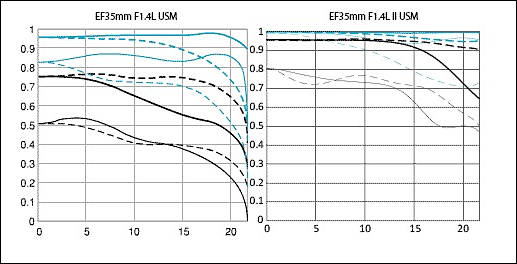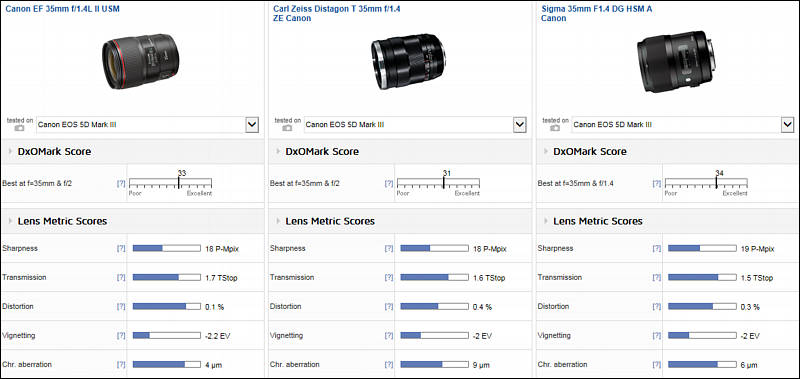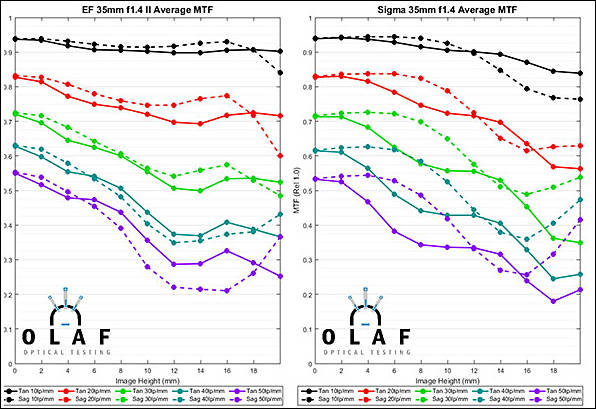
-
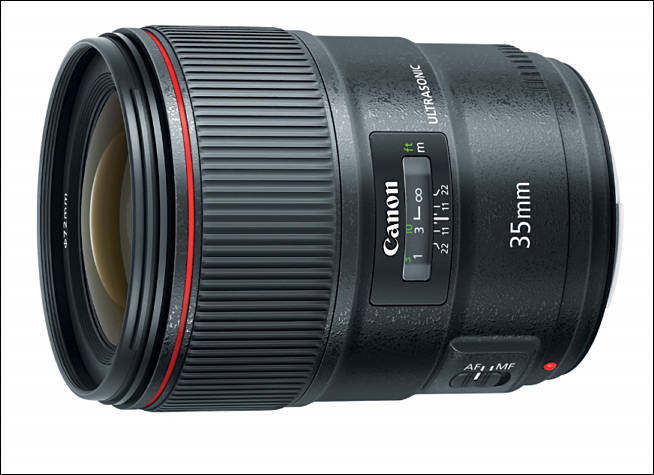
Rumored specs
- 14 elements in 11 groups
- with 2 aspherical lenses, 1 UD lensm, 1 BR lens to reduce chromatic aberrations
- Special SWC coating and fluorine coating
- 9 blade circular aperture
- Minimum focusing distance - 0.28m
- Dust and water resistant
- Filter mount diameter of 72mm
- Lens length - 105.5mm
- Maximum diameter: 80.4mm
- Weight 760g
- Price around $1799
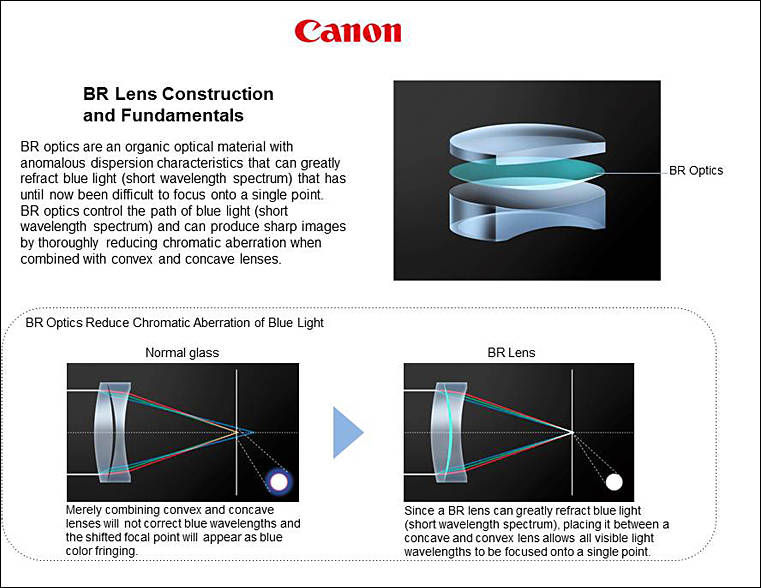
-
PR
Canon U.S.A., a leader in digital imaging solutions, today introduced the new EF 35mm f/1.4L II USM lens for EOS system cameras - a wide-angle fixed-focal-length Canon EF lens that is the world's first* to utilize the Company's newly-developed and exclusive Blue Spectrum Refractive Optics (BR Optics). This new optical technology utilizes organic material newly developed by Canon to achieve a higher level of chromatic aberration correction than other existing technologies resulting in outstanding high-quality imaging performance.
"As the world leader in production of interchangeable lenses, having produced over 110 million EF lenses since 1987, it is with great excitement that we now introduce a revolutionary new technology to add to Canon's unequaled optical heritage when it comes to chromatic aberration correction," said Yuichi Ishizuka, president and COO of Canon U.S.A., Inc. "We continually strive to achieve the ideal lens performance, which has driven the development of Blue Spectrum Refractive Optics, found in the new EF 35mm f/1.4L II USM lens. This technology is yet another 'first' in optical design introduced by Canon to enhance the performance of our lenses for our customers."
Canon's proprietary Blue Spectrum Refractive Optics (BR Optics) incorporate a new organic optical material with unique anomalous dispersion characteristics for use in camera lenses. The molecular design of BR Optics refracts blue light (short wavelength spectrum) to a greater degree than other existing optical technologies including UD glass, Super UD glass and Fluorite, to control color fringing as effectively as possible. When placed between convex and concave lens elements made from conventional optical glass materials, BR Optics help to produce sharp images with outstanding contrast and color fidelity by thoroughly reducing axial chromatic aberration.
In addition to BR Optics, the new lens incorporates two aspherical elements and one UD glass element in a 14 element, 11 group optical formula. The EF 35mm f/1.4L II USM lens also features Canon's proprietary Sub-Wavelength Structure Coating (SWC), applied to the rear surface of the first and second aspheric lens elements to help combat flare and ghosting caused by light rays entering the lens at a large angle of incidence. The lens also offers best in class minimum focusing distance at 0.28m (approximately 11 inches) resulting in an increased maximum magnification of 0.21x - ideal for capturing close-up subjects. Autofocusing is swift and virtually silent due to a rear-focus optical system and Canon's original Ring USM focusing motor. Full-time mechanical manual focusing is also available even when the lens is set to AF mode.
The Canon EF 35mm f/1.4L II USM lens features improved durability over its predecessor. As with all L series lenses, this new lens is highly resistant to dust and water ─ making it ideal for outdoor photography, even in harsh conditions. The high-grade design of the lens provides users with a substantial and luxurious feel, as well as optimal operability. In addition, a fluorine coating on the front and rear lens surfaces helps to repel liquids and dust particles, and makes the lens easier to clean.
Pricing and Availability
The new Canon EF 35mm f/1.4L II USM lens is compatible with 72mm filters and will be supplied with Lens Hood EW-77B and Lens Pouch LP1219. It is scheduled to be available in October 2015, for an estimated retail price of $1,799.00.
-
BR PR
Canon U.S.A., Inc., a leader in digital imaging solutions, today announced that its parent company, Canon Inc., has developed Blue Spectrum Refractive (BR), a new optical element for use in camera lenses that corrects chromatic aberrations at an extremely high level to achieve superb imaging performance.
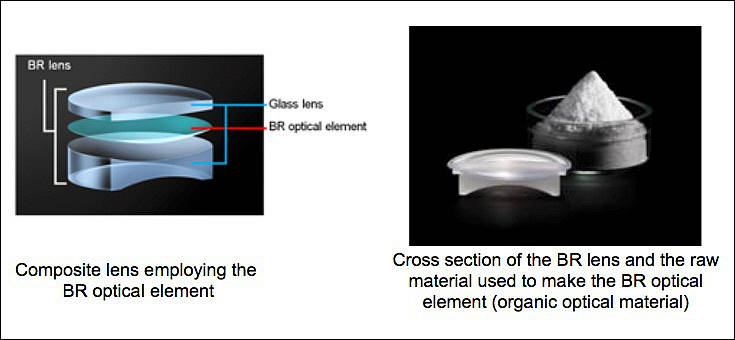
The new Canon-developed BR optical element offers characteristics that significantly refract blue light, which lies within the short-wavelength range, to achieve impressive levels of chromatic aberration correction for outstanding imaging performance. The BR optical element, positioned between two glass lens elements to create a BR lens, will make its debut in the new EF 35mm f/1.4L II USM wide-angle fixed-focal-length lens, which is scheduled to go on sale in October 2015.
Natural light, or white light, comprises a spectrum of wavelengths, or colors, each of which realizes a unique refractive index when passing through a lens. As all colors do not converge on the same point, this disparity causes chromatic aberrations, or color fringing, to occur in an image.
Canon develops optical elements by reviewing organic optical materials, beginning with the design of molecular structures, with the aim of achieving optimal chromatic aberration correction that suppresses color fringing. With the successful development of the BR optical element, which offers unique light-dispersion characteristics that significantly refract blue light-a wavelength that, until now, had proven particularly difficult to converge to a specific focal point-Canon is able to develop lenses that result in outstanding imaging performance by correcting chromatic aberrations at an exceptionally high level.

 sony52.jpg735 x 340 - 37K
sony52.jpg735 x 340 - 37K -

 sony58.jpg800 x 472 - 57K
sony58.jpg800 x 472 - 57K -

 sony62.jpg800 x 371 - 46K
sony62.jpg800 x 371 - 46K -

 zebra59.jpg800 x 516 - 48K
zebra59.jpg800 x 516 - 48K -
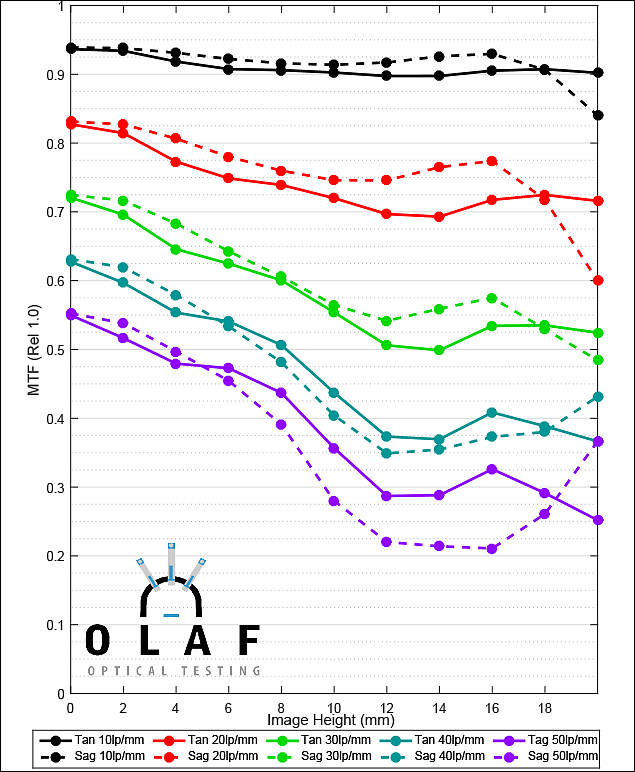
While the corner performance from this lens is not quite as good as what the center delivers, it remains impressive in its own right. Those using 22.3 megapixel-class or lower resolution full frame DSLRs will see very sharp corners natively and may question what I'm talking about. Those using ultra-high sensors that put lens performance under a microscope will see a touch of softness in the corners at f/1.4, even without regard to vignetting. By the time vignetting clears almost completely at f/2.8, even 5Ds R corners are looking really impressive.
http://www.the-digital-picture.com/Reviews/Canon-EF-35mm-f-1.4-L-II-USM-Lens.aspx

 zebra124.jpg635 x 772 - 97K
zebra124.jpg635 x 772 - 97K -
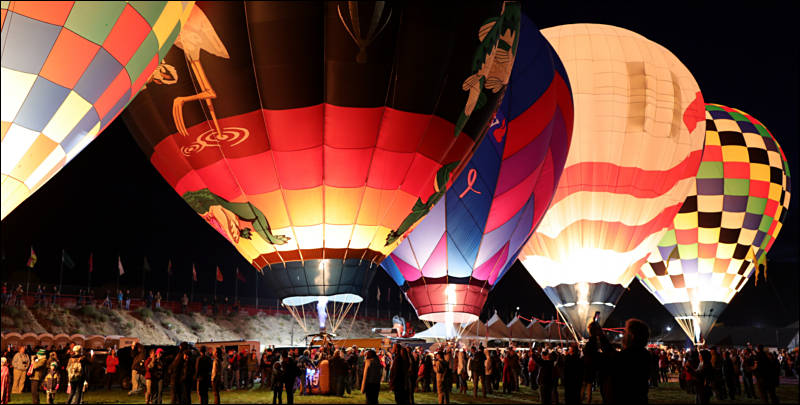
Autofocus was quick and accurate, lens balanced nicely. Images look fantastic with lots of crisp, sharp detail, and the wide, bright aperture helps a lot when shooting in low light. It's also hard not to enjoy the wonderful, razor-thin depth of field and smooth out of focus blur that an f/1.4 aperture creates.

 zebra170.jpg800 x 405 - 72K
zebra170.jpg800 x 405 - 72K -

 zebra269.jpg800 x 532 - 62K
zebra269.jpg800 x 532 - 62K -

 zebra277.jpg800 x 379 - 50K
zebra277.jpg800 x 379 - 50K -

 zebra290.jpg798 x 447 - 58K
zebra290.jpg798 x 447 - 58K -

 zebra355.jpg596 x 409 - 63K
zebra355.jpg596 x 409 - 63K -

Despite its very bright ƒ/1.4 aperture, the Canon 35mm ƒ/1.4L II is impressively sharp wide-open, on both full-frame and APS-C cameras. Given our expectations with Canon L-series lenses, we were hoping for a super-sharp lens, and the 35mm Mark II doesn't disappoint -- seriously fantastic sharpness from this lens, and a drastic improvement in sharpness compared to the original model!

 zebra398.jpg800 x 537 - 104K
zebra398.jpg800 x 537 - 104K -

 zebra423.jpg800 x 543 - 68K
zebra423.jpg800 x 543 - 68K -
Centre sharpness remains very high through from f/2 to f/11, with f/16 and f/22 being adversely affected by diffraction. The edges aren't quie as sharp as the centre, with f/4-f/11 producing the sharpest results.
http://www.photographyblog.com/reviews/canon_ef_35mm_f1_4_l_ii_usm_review/
-
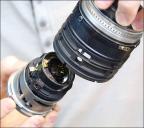
 zebra505.jpg599 x 534 - 48K
zebra505.jpg599 x 534 - 48K -

At wide apertures lens has good level of sharpness but being quite soft at the edges. This is rapidly improving by f/2 and the centre is nice and crisp, with very good sharpness. The peak of central performance comes at f/4 where sharpness is excellent, then drops away gradually, still very good at f/8 but only fair at f/16 and f/22. The edges lag behind some way, but achieve good levels of sharpness between f/4 and f/8.
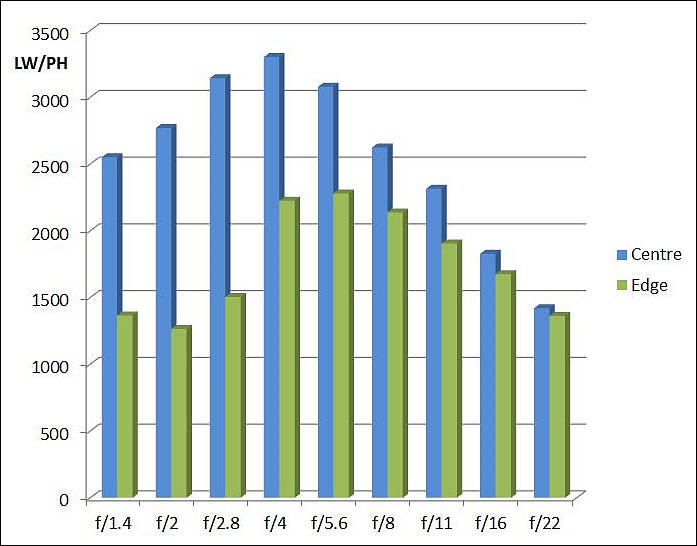
https://www.ephotozine.com/article/canon-ef-35mm-f-1-4l-ii-usm-lens-review-28614

 zebra550.jpg800 x 529 - 122K
zebra550.jpg800 x 529 - 122K
 zebra549.jpg697 x 546 - 57K
zebra549.jpg697 x 546 - 57K -
Some advanced tech from Canon. But not cheap.
-

 img4.jpg800 x 538 - 57K
img4.jpg800 x 538 - 57K -
Make it slightly cheaper, dear Canon. And I'll get one.
-
Review

Sharpness is outstanding. It's in a different league to the Canon MkI at low F/numbers, and this is the sharpest 35mm F1.4 currently available.

 sample85.jpg800 x 539 - 62K
sample85.jpg800 x 539 - 62K
Howdy, Stranger!
It looks like you're new here. If you want to get involved, click one of these buttons!
Categories
- Topics List23,993
- Blog5,725
- General and News1,354
- Hacks and Patches1,153
- ↳ Top Settings33
- ↳ Beginners256
- ↳ Archives402
- ↳ Hacks News and Development56
- Cameras2,368
- ↳ Panasonic995
- ↳ Canon118
- ↳ Sony156
- ↳ Nikon96
- ↳ Pentax and Samsung70
- ↳ Olympus and Fujifilm102
- ↳ Compacts and Camcorders300
- ↳ Smartphones for video97
- ↳ Pro Video Cameras191
- ↳ BlackMagic and other raw cameras116
- Skill1,960
- ↳ Business and distribution66
- ↳ Preparation, scripts and legal38
- ↳ Art149
- ↳ Import, Convert, Exporting291
- ↳ Editors191
- ↳ Effects and stunts115
- ↳ Color grading197
- ↳ Sound and Music280
- ↳ Lighting96
- ↳ Software and storage tips266
- Gear5,420
- ↳ Filters, Adapters, Matte boxes344
- ↳ Lenses1,582
- ↳ Follow focus and gears93
- ↳ Sound499
- ↳ Lighting gear314
- ↳ Camera movement230
- ↳ Gimbals and copters302
- ↳ Rigs and related stuff273
- ↳ Power solutions83
- ↳ Monitors and viewfinders340
- ↳ Tripods and fluid heads139
- ↳ Storage286
- ↳ Computers and studio gear560
- ↳ VR and 3D248
- Showcase1,859
- Marketplace2,834
- Offtopic1,320


